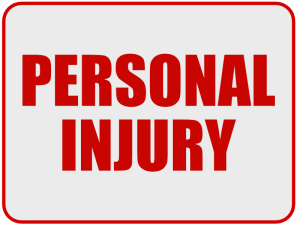FINDING ALL POSSIBLE INSURANCE COVERAGE AFTER PERSONAL INJURY
Call The Bill Connor Law Firm Today!
The term "personal injury" can have different meanings depending on the context. In the context of lawsuits, personal injury means those damages which an injured party or parties will bring against the party who caused the injury. Within damages in a lawsuit, it is distinguished from property damage which may have occurred during the same incident or accident. Closely connected to personal injury, and brought as damages with personal injury, are personal damages like lost wages. The first question someone should ask when they are injured by the seeming negligence of another is: Should I bring a lawsuit and what should I reasonably expect from the lawsuit? In determining whether or not to take the steps toward bringing a lawsuit, which would normally begin with a demand letter and attempt to settle before filing, is the reasonable chance of winning in court. You must be able to show the negligence of the offending party or parties (Note: I have written a separate article about negligence which explains the elements you must prove). Regardless of the truth about what occurred during the accident or incident, what matters most is the evidence which could go before a jury. Did the other side make an admission? How many and how credible are witnesses? What does the physical evidence show? All these factors must be analyzed to ensure the case has the potential for winning in front of a jury (Note: I have also written about the importance of venue, where you can seek venue, and factors about venue which plan in the decision). After determining the reasonable chance of success, the next evaluation is the reasonable amount to be expected in settlement and/or jury verdict. In some cases, the monetary damages expected may be so low it is not worth it to pay the costs associated with bringing suit. With personal injury, the first analysis is on the total medical bills associated with the injury. If EMS and emergency evaluation/treatment is involved, the bill for those medical services is likely to be over $3,000.00. Those are usually the most uncontested bills, as seeking treatment in the Emergency Room is normally considered reasonable regardless of the accident. In determining the potential jury verdict, the actual bill from the hospital is what must be considered as the damages. Not what was paid by the insurance company or patient co-pays. Your insurance company may have paid only a fraction of the bill, but that insurance information will not go before a jury. Only the medical bills. Further treatment recommended by the ER, like seeing a primary care provider, is normally accepted as reasonable. Unusual treatment, like chiropractic treatment in some circumstances, can be questioned. Treatment which evidence/records proves connected to a pre-existing injury can be contested. This is an issue in which expert testimony may be required in bringing suit, but worth it is the liability appears clear and the damages are substantial. Beyond straight medical bills, pain and suffering, and future partial or permanent disability are more subjective damages, but damages the jury will be expected to consider in the overall verdict. Lost wages, loss of future earning capabilities, loss of enjoyment of certain things due to the injury are also damages connected with personal injury the jury would consider. Different venues offer different average jury verdicts, so studying the venue and prior verdicts is important to evaluating the value of the case. As a rule of thumb in many venues, assuming no substantial future damages and/or substantial injuries like broken bones, the total damage award can be expected at 2-3 times the overall medical bill. The reason it goes well beyond the medical bills is compensation for pain and suffering associated with the injury. The amount can be substantially more if the injury is significant and involves futures. Again, each venue is different, so it's important to study the venue and consider all medical damages and future issues. In some cases, psychological injury comes into play due to the nature of the injury. Additionally, spouses can claim damages for "loss of consortium" due to the accident. These are damages the spouse suffers due to what has happened to their loved one. Note: Loss of consortium goes beyond the sexual into all the things spouses do for each other. It is always best to seek legal representation (note: I have written about contingency fee agreement for those bringing lawsuits), and best to get your lawyer to provide detailed analysis. However, with these basics of information, you will be in the position to better understand whether to sue and what to expect.










